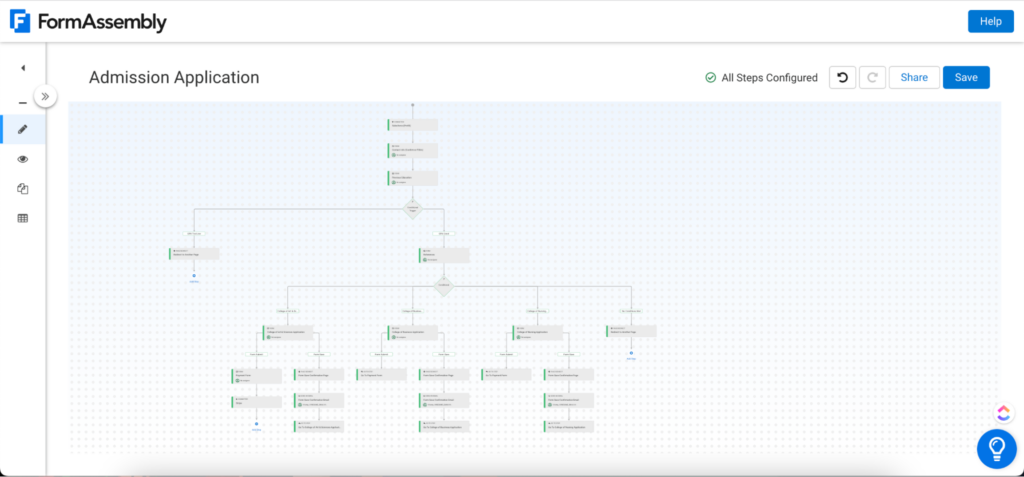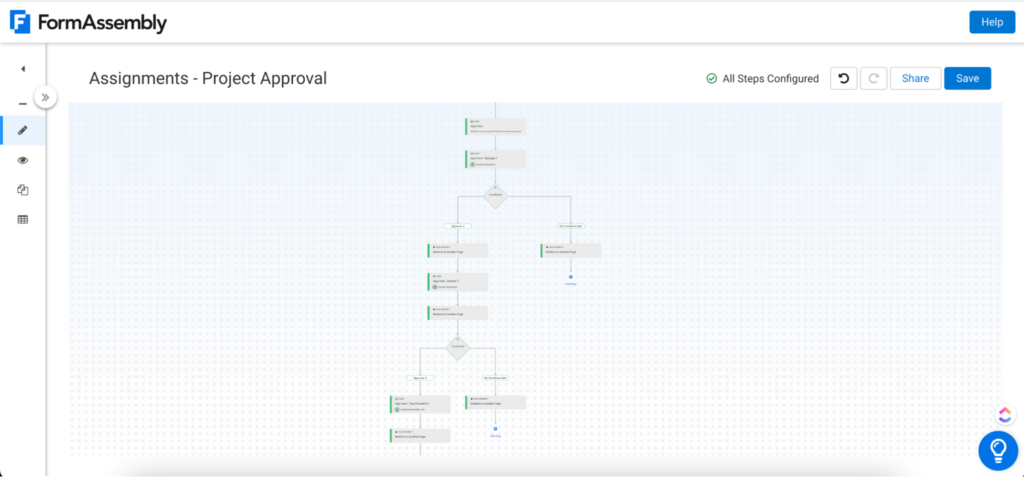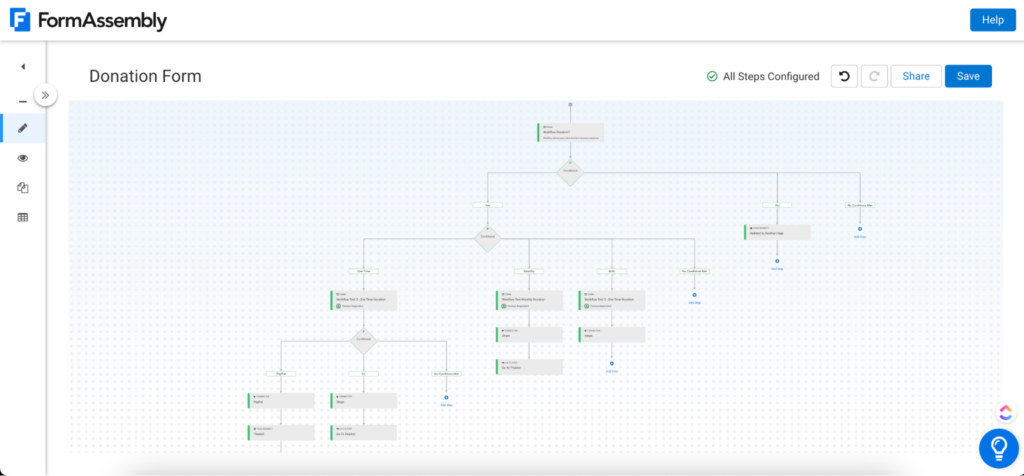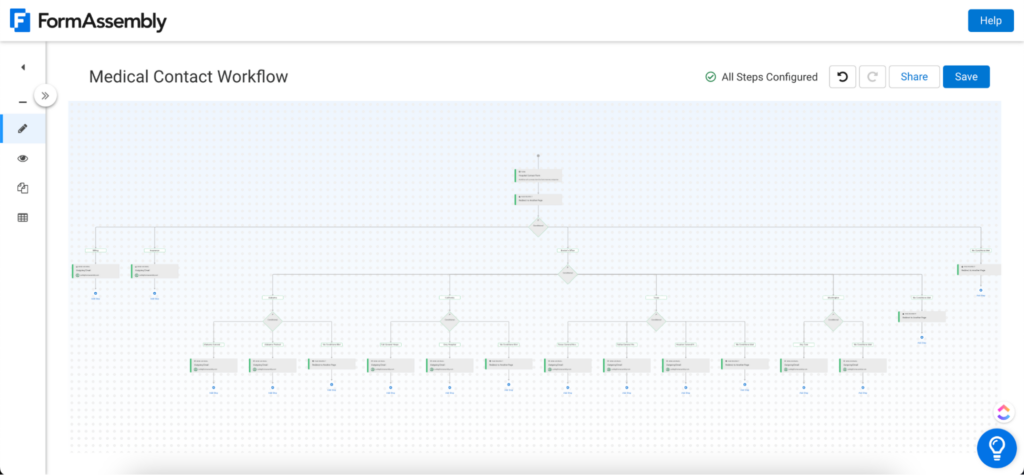Collecting data, even with digital forms, can quickly run into workflow roadblocks. Maybe you need to manually notify a staff member every time an individual submits a contact form. Or you have to constantly go back and forth between managers during approval processes. Whatever the case, the more manual steps you must take, the less efficient and productive your data collection processes become.
If manual data collection processes are slowing your team down and causing data silos, it’s time to level up with workflow automation. The right tools can automate most data processes, regardless of how many forms, participants, or steps they involve.
Automating Data Processes with FormAssembly Workflow
Using a no-code process builder like FormAssembly Workflow, you can visually map out data collection processes including forms, emails, connectors, and more. Workflow provides automated conditional routing and form-to-form prefilling, so you can keep processes running smoothly between teams and departments with minimal manual involvement.
Overall, Workflow allows you to simplify and automate business processes that require data to be collected from multiple different parties, in multiple different forms, or over multiple days. Here’s how workflows can level up your data collection processes.
Admissions Workflow

Many higher education processes can benefit from workflow automation, including admissions. In an admissions workflow, data gathered from applicants in the initial form (such as name, email, address, major of interest, etc.) flows smoothly through conditional fields that trigger based on responses.
For example, the workflow referenced above asks applicants to provide their high school GPA as part of the application process. If an applicant’s GPA is too low, the workflow triggers a page redirect and ends. If the GPA is high enough, the workflow automatically sends the applicant a form asking for references.
Once the applicant submits their references form, the workflow sends their data to the college they selected in their application (business, arts, nursing). Finally, the workflow sends the applicant to a payment form. In this workflow, this is a go-to step to one payment connector and form for all colleges.
Project Approval Workflow

Approval chains are necessary processes for many organizations, but they quickly become tedious without automation. Circulating paper documents is not only time-consuming, but can lead to delays, data silos, missed deadlines, and more. With a visual workflow, such as the one pictured above, it is much easier to track approvals, no matter how many respondents are part of the process.
In this approval workflow, the employee begins the process by submitting a project proposal and assigning it to their manager. The workflow automatically triggers an email sent directly to the manager. Using a conditional step, the workflow creates two separate paths depending on whether the project is approved or rejected by any individual who is part of the process.
At each step, the workflow notifies the employee of the unapproved project or, if the project is approved, sends an email notification for the next individual to review. This automated approval chain continues until the final reviewer accepts or rejects the project.
Automating these processes improves the speed and accuracy of approval chains, while providing greater transparency and data visibility for all participants.
Donation Workflow

Any organization, especially nonprofits, can benefit from streamlined donation workflows. The workflow above takes advantage of conditional pathways and payment connectors to simplify these processes for both respondents and staff.
This workflow begins with the initial donation form, then branches with a conditional once the donor selects a payment method (such as one-time, subscription, or a combination of payment options). The donor can then easily make a payment through a connector or with a credit card.
Conditional rules allow users to create multiple workflow pathways, without having to build complicated formulas.
Medical Contact Workflow

Ensuring prompt and helpful patient communication is important for healthcare organizations, especially large hospitals with multiple locations. Beneficial for hospital administration, the workflow above sends patient requests and contact information through conditional pathways based on their region and services needed. This workflow also provides a path if no conditions are met, ensuring that no patient requests are lost.
This workflow triggers different paths based on whether a patient submits a request for billing and insurance, primary care, or selects a specific region. The workflow then automatically routes these responses to the correct hospital within the location of choice for follow-up from hospital administration.
Learn More About Workflow
Interested in seeing these workflows in action? Watch a demonstration from our Knowledge team in our webinar, Automate Your Work: Building Better Data Processing with Workflow, on Tuesday, May 23rd at 11 a.m. ET.



